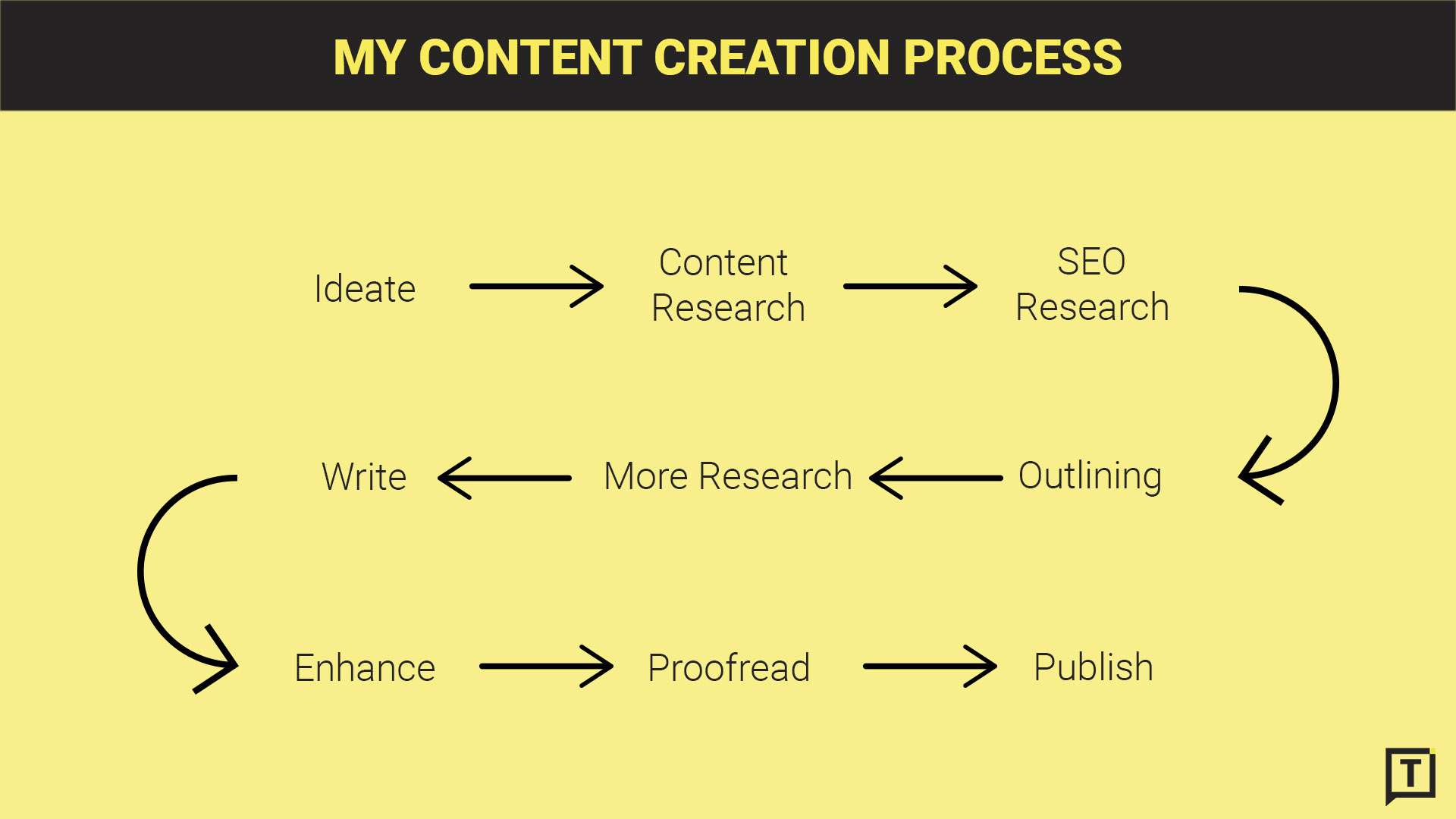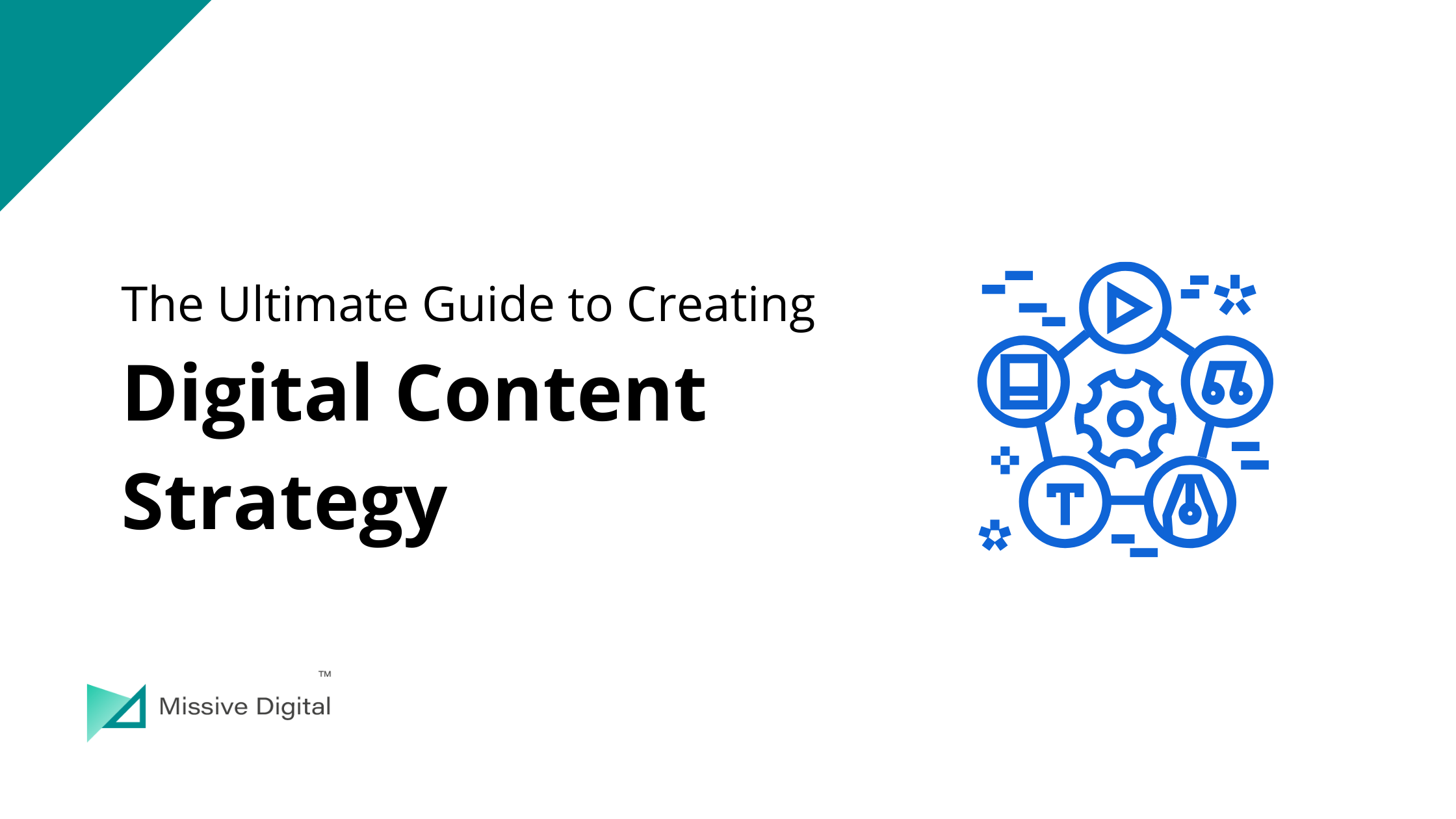Why does Seth Godin, one of the world’s most well-known marketers, preach that digital content is the best form of marketing? Simply because, if you provide in-depth, high-quality material, you can reach your target audience without paying a fortune.
But Content Marketing is a cheaper alternative which with “HubSpot’s State of Inbound Report showed that marketers who prioritize blogging get 13x more ROI.”
Sorry, but it’s simply the way things are…

What Kind of Digital Content Works?
You must provide something beneficial through your content. Attract user attention with information that addresses the issues they face. Once they are fully educated, only then you can start talking about your product ie. once you’ve gotten their attention.
Though laying the foundations for a successful digital content strategy takes time (it doesn’t happen quickly), once they’re in place, you’ll find it time well spent.
However, manufacturing of content can be time-consuming and, well, aimless if there is no direction, plan, or common aims. According to research findings, 62 percent of small business owners are stressed due to the lack of marketing strategy in place. And it is no better when it comes to a digital content strategy.
This is why I’ve created this guide.
It shows you how to develop a digital content strategy that will serve as the foundation for all of your subsequent content marketing initiatives. “I am going to use my decade-long experience and the sayings of multiple authorities in the arena of digital marketing to craft this guide.”
What is a Digital Content Strategy?
A digital content strategy serves as a roadmap for what, why, and how content should be generated within an organization for the company to achieve its objectives. But when we talk of digital content, it excludes any sort of printed material.
Blog entries, online articles, webinars, educational videos, online tutorials, courses, and podcasts are all examples of digital content. Because creating content takes time, many strategies only include a subset of these options.
A strategy isn’t abstract; it’s concrete. It provides a comprehensive foundation for all areas of a company’s content. A subset of this is digital content strategy, which focuses on how a business will offer content through several digital platforms.

An organization’s content creation journey should ideally begin with a strategy. That isn’t to say that the strategy is set in stone.
It will change as your goals change.
It will also change once you have content analytics in place to help you figure out what works, and what doesn’t.
Finally, it can evolve as your audience’s needs change.
Let’s look at some actual facts and data to see what makes the digital content strategy industry tick, and then analyze the ramifications. Use these statistics as a starting point for developing the greatest content marketing plan in your business, and refer to them whenever you need a refresher.
Random Facts About Digital Content
- While it’s tempting to assume that every company that creates content has a plan, this isn’t the case. Only 65% of content marketers indicated they had a defined strategy in the Content Marketing Institute’s (CMI) 2019 B2B Report.
- Another 32% marketers stated that their plan is undocumented. When content asset requests start pouring in, undocumented strategies aren’t typically followed closely, and you run the risk of getting off track.
Knowing Digital Content in-depth
Although many professionals in the content industry claim that online content is everything that may be published, digital content usually refers to information available online for download or distribution on electronic media such as an electronic book or an iTunes song. Following this logic, it’s safe to assume that if you’re online, you’ll be viewing, watching, or listening to some form of digital content.
This form of content, often known as digital media, can include:
- Images and documents are digital equivalents of traditional physical media.
- Digitally encoded music and video are examples of audiovisual content.
- Web pages, software programs, and social media posts are all examples of natively digital goods.

As a result, content marketing is the method by which you use that vital information, leveraging it in a way that your ideal consumer would consume it. It’s not easy to master the usage of digital content in your marketing strategy, so don’t forget to congratulate yourself on your accomplishments!
Outcomes of Creating Digital Content
There are four important outcomes to consider ‘while creating digital content for Marketing’:
- To entertain – this will elicit strong emotional responses from viewers, making it extremely shareable.
- To educate – this will allow for a wider reach, especially among people who are unfamiliar with “your” products or services. This is, once again, incredibly shareable.
- To convince – This is a little more emotive; stuff that gradually affects the consumer’s viewpoint (I say consumer as persuasive content will often be used in a product sense).
- To convert — Content that is rational rather than emotive, as you’ll need a decision-making brain to analyze what a conversion piece has to offer.
What is Digital Content Planning?
Do you have too much content and don’t know how to organize it effectively, or you don’t have any and don’t have the time, effort, or know-how to develop it? You have a content planning problem.
A digital content plan is a road map that lays out not just what you’ll generate, but also how you’ll develop it, distribute it, and use it to attract, retain, and convert readers and viewers into customers.
If we don’t understand who we’re communicating with, we’re more likely to give irrelevant or unhelpful information. So, before we can develop content, we must first understand who our target audience is, the possibilities to engage with them, and the types of content they are most likely to find interesting.
According to the CMI’s digital content marketing statistics, 72 percent of marketers believe that content marketing boosts engagement. Furthermore, 72% think it has enhanced the number of leads. One of the content marketing ROI case studies is from Tiger Fitness. With video content marketing, they were able to get a 60 percent repeat customer rate.
As they say, ‘Not every piece of content is created equal’. The interest in various sorts of content varies depending on your audience and their activities across various touchpoints and platforms. So, it is extremely important to understand your audience and have a buyer persona in place.
It’s also critical to build a content development pipeline that can be readily maintained and sustained over time, taking into account the time and resources you have to create material that is most relevant to your target audience. It will be more difficult to keep up if your workflow slows you down or irritates you, and you won’t have enough content to support your content marketing plan. While it’s tempting to assume that every company that creates content has a plan, this isn’t the case. Only 65% of content marketers indicated they had a defined strategy in the Content Marketing Institute’s (CMI) 2019 B2B Report.
The following are examples of tasks found in a typical content creation workflow:
- Outline
- Write
- Review
- Edit
- Approve
- Publish

Why have a Digital Content Strategy in Place?
Before we get into the process, it’s important to note that a content marketing plan isn’t a “nice to have”—it’s a must-have for success.
The Content Marketing Institute’s Annual Benchmarks, Budgets, and Trends Report validate this trend year after year. Even though 57 percent of content marketers say they don’t have a defined content plan in 2021, those that do routinely view their efforts as considerably more successful than those who don’t.
There is a great deal of digital content available. According to the 2017 State of the Creator Economy survey (SOCE), the average US consumer reads over 200 articles each month and accesses nearly 400 websites. As a result, having a digital content marketing strategy in place is more vital than ever, Why?.
A content strategy is not the same as a digital content marketing strategy. While content strategy focuses on content generation and delivery, digital content marketing strategy considers how a business may leverage content marketing across a customer’s experience or life cycle.
As you might expect, digital content marketing strategy is concerned with digital content marketing, such as video, social content, and website content. An effective plan will look at how content marketing may work with and complement a company’s sales strategy, customer strategy, and other marketing methods.
Process of Creating a Successful Digital Content Strategy
Let’s start with the fundamentals. To successfully cut through the clickbait and irrelevant stories, you must plan your content using a well-researched digital content marketing approach. This entails considering what you want to accomplish with the communications you’re sending out.
The first step in building a solid, successful digital content marketing plan is clearly stating your end goal. These are likely activities you’re already aware of, but they’re worth laying out to provide a solid foundation for your plan.
Define your objectives
Your company’s material should be created with a specific aim in mind and as part of a larger marketing strategy. Make a list of your company’s objectives for the coming year. The obvious goal for any business is to raise income, but are you looking to enter a new industry, launch a new product, or reach out to a new demographic? You may think more about how content will fit into your goals after you know what you’ll be working toward.
Identify Customers
Let’s imagine your company is planning to launch a new product this year. What are the demographics of this product’s users? Is there a difference between them and current users?
If that’s the case, what distinguishes them from your current customers? Conduct research to learn more about these customers and what will appeal to them. To be relevant, we need to know who we’re talking to and who we’re targeting, and there are a few different ways to do that:
- Audience: High-level groups of people who are similarly motivated and have a common goal or purpose.
- Individuals (or companies) who share one or more similar qualities or can be grouped by a common trait form segments of an audience or list.
- Persona: A data-driven, thorough yet imaginary description of a hypothetical set of users’ aims and behaviour.
Regardless of whose audience definition you use or consult to direct your content marketing efforts, make sure you’re only focusing on your top 5 audiences and determine where they go online and what types of information they prefer. Do they prefer to learn about a topic by watching a video or reading about it? Which social media platforms do they use? Knowing this can help you determine where you should market your content to ensure that the right people see it.
Create a Content Marketing Strategy
You can plan the types of content your marketing team will use throughout the year to reiterate the message of your goal once you know where to promote.
- Allocate Budget and Resources
Understanding the costs and elements of content marketing, as well as the foundations of setting a budget for a digital marketing strategy, whether it’s content marketing or search engine optimization, is critical when creating a content marketing budget (SEO).
That’s why we’ve put up three budgeting recommendations for content marketing:
- Set annual and quarterly goals for yourself – what do you want to achieve and how long will it take?
- Determine who will assist you: will you stay in-house or hire a third party?
- Determine the tools you’ll employ – how will you keep track of and develop content?
Once you’ve answered these questions, you’ll be able to create a more realistic budget since you’ll know what you want to achieve, who will assist you in achieving those goals, and how you’ll track your progress.
Great Digital Content Strategy Examples
Some brands have mastered the art of content creation to their adavantage. You can see their content, not only spread out on the internet, but also find their messaging effective.
Strengthen brand’s mission: Tom’s Shoes
Tom’s objective is simple: the company runs a “sell one, give one” campaign. For every pair of shoes sold, it donates one pair. Every year, the brand hosts a “Day Without Shoes” to emphasize its aim and encourage people to help others. The idea is for individuals to use the hashtag #daywithoutshoes to post images of themselves barefoot. Tom’s donates a pair of shoes for each hashtagged photo.
Tom’s offers a website where shoppers may meet the people who benefit from the shoes the company donates. The most successful year thus far for the plan was 2015, when approximately 300,000 people received new shoes.
Take a multi-pronged approach: IBM
IBM’s digital content marketing approach demonstrates that appealing to a diverse audience and establishing your brand as an authority on a variety of issues can pay off. IBM offers a Think Blog that discusses issues like content marketing and the importance of having a content marketing plan. A Watson blog and a Social Business blog are also available. Because of its content marketing approach, IBM is frequently cited by reporters as a model to follow when putting together a strategy.
What Kind of Digital Content to Produce?
From the different kinds of digital content, we recommend to produce the following:
- Infographics
This is a visual depiction of facts or information that does exactly what it says on the tin. It makes the statistics or content you’re discussing more interesting to the reader.
- Videos
Videos are typically a few minutes long, providing for a succinct explanation of whatever the videographer is attempting to convey. This can be humorous or educational, and it is fun for everyone. Example- Brand films, podcasts, webinars, Live Streaming, etc.
- Memes
They’re extremely popular among millennials and Generation Z online users. It is usually films and photographs with amusing text that become viral. Doge and Overly Attached Girlfriend are just two examples of humorous memes that can be found by doing a simple Google search.
- Own Product Evaluations
Everyone likes a personal opinion, and sharing yours on your platform helps your followers to learn more about what you think about a product. If you run a blog, your opinion is valued highly, and your readers are more inclined to trust your review over one published in a magazine these days.
- External Product Testimonials
This is the same regardless of whether it is stated about a specific product or company. Amazon and eBay are excellent instances of how your feedback on a product can influence purchasing decisions.
- Q&A
Formal and informal question and answer sessions are both possible. Twitter is an excellent medium for allowing users who might not otherwise have the opportunity to ask questions in a newspaper or magazine to do so.
Up Your Marketing Game with a Powerful Digital Content Strategy
As you can see, digital content is an excellent approach to raise brand awareness, establish trust, and generate a consistent flow of leads for your company. And for deriving all the benefits, you need to have a digital content strategy in place.
However, finding which content connects with your target audience and which platforms to disseminate it through is a long-term plan that takes time, work, and a little trial and error. It’s simply a question of rinse, repeat, and scale up if possible once you’ve discovered a great formula for your firm.
Creating an working digital content starategy can be taxing for more brands, but here at Missive Digital our expert content strategists are alaways available to help. You can contact us for eMail, SEO, Content, Social Media Marketing Services or any digital content related services.
Also Read:


